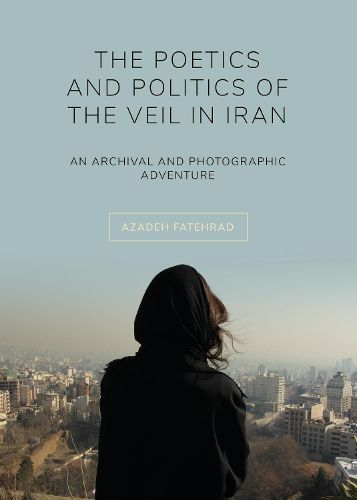Readings Newsletter
Become a Readings Member to make your shopping experience even easier.
Sign in or sign up for free!
You’re not far away from qualifying for FREE standard shipping within Australia
You’ve qualified for FREE standard shipping within Australia
The cart is loading…






This volume explores the lives of women in Iran through the social, political, and aesthetic contexts of veiling, unveiling, and re-veiling. Through poetic writings and photographs, Azadeh Fatehrad responds to the legacy of the Iranian Revolution via the representation of women in photography, literature, and film. The images and texts are documentary, analytical, and personal.
The Poetics and Politics of the Veil in Iran features Fatehrad’s own photographs in addition to work by artists Hengameh Golestan, Shirin Neshat, Shadi Ghadirian, Abbas Kiarostami, Mohsen Makhmalbaf, Adolf Loos, Gae tan Gatian de Clerambault, and Alison Watt. In exploring women’s lives in post-revolutionary Iran, Fatehrad considers the role of the found image and the relationship between the archive and the present, resulting in an illuminating history of feminism in Iran in the twentieth and twenty-first centuries.
$9.00 standard shipping within Australia
FREE standard shipping within Australia for orders over $100.00
Express & International shipping calculated at checkout
This volume explores the lives of women in Iran through the social, political, and aesthetic contexts of veiling, unveiling, and re-veiling. Through poetic writings and photographs, Azadeh Fatehrad responds to the legacy of the Iranian Revolution via the representation of women in photography, literature, and film. The images and texts are documentary, analytical, and personal.
The Poetics and Politics of the Veil in Iran features Fatehrad’s own photographs in addition to work by artists Hengameh Golestan, Shirin Neshat, Shadi Ghadirian, Abbas Kiarostami, Mohsen Makhmalbaf, Adolf Loos, Gae tan Gatian de Clerambault, and Alison Watt. In exploring women’s lives in post-revolutionary Iran, Fatehrad considers the role of the found image and the relationship between the archive and the present, resulting in an illuminating history of feminism in Iran in the twentieth and twenty-first centuries.